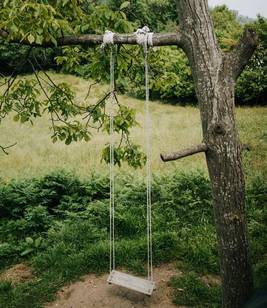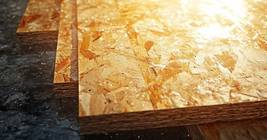Circulation Pumps: Small But Mighty Workhorses of the Water World
Most people don’t wake up thinking about circulation pumps - unless, of course, their heating system has just failed spectacularly. These small but powerful devices are the unsung heroes of modern heating and plumbing, ensuring that hot water and warmth move efficiently through homes, businesses, and industrial systems. And when it comes to getting the job done right, BritTherm has built a reputation for making some of the most reliable and energy-efficient circulation pumps on the market.
What Exactly Is a Circulation Pump?
If you’ve ever turned on a tap and enjoyed hot water within seconds, rather than standing there questioning your life choices while waiting for it to warm up, you can thank a circulation pump. These clever devices keep water constantly moving through a closed-loop system, preventing waste, improving efficiency, and making sure your heating system actually does what it’s supposed to.
But their usefulness extends beyond just saving you from an impromptu cold shower. Circulation pumps are essential in central heating, underfloor heating, and industrial applications where consistent temperatures matter. BritTherm designs its circulation pumps to handle these tasks with efficiency, reliability, and minimal energy waste, ensuring that homes and businesses stay comfortable without skyrocketing utility bills.
Types of Circulation Pumps: More Variety Than a Coffee Shop Menu
Not all circulation pumps are the same. Using the wrong one for the job is like trying to cook a steak with a candle—it’s not going to end well. Here’s a quick breakdown of the main types:
- Standard Wet-Rotor Pumps – The go-to for residential heating and hot water circulation, these are quiet, efficient, and built for long-term reliability. BritTherm offers high-quality wet-rotor pumps designed to work seamlessly in domestic systems.
- Variable-Speed Pumps – These adjust their speed based on demand, making them ideal for energy-conscious homeowners and businesses looking to optimize performance.
- Industrial Circulators – If you need a pump that can handle high-demand applications, BritTherm’s industrial-grade models ensure large-scale heating and cooling systems run smoothly.
- Hot Water Recirculating Pumps – Tired of waiting ages for hot water? These pumps keep it flowing instantly, making them perfect for busy households or businesses that can’t afford to waste time (or water).
Why Efficiency Matters More Than Ever
With energy costs climbing faster than a cat on a hot tin roof, efficiency is more important than ever. A circulation pump that guzzles power is just as bad as one that doesn’t work at all. BritTherm’s high-efficiency pumps use smart technology to adjust their performance, reducing waste and keeping energy bills in check.
Modern circulation pumps come with automatic adjustment settings, high-efficiency motors, and advanced controls to ensure water moves only when necessary—no more, no less. This means better heating performance, lower operational costs, and a system that doesn’t sound like it’s struggling for survival.
Common Problems (And Their Sneaky Fixes)
Even the best circulation pumps can run into issues, and when they do, it’s usually when you least expect it.
- Airlocks – If your pump sounds like it's gargling marbles, air might be trapped inside. Bleeding the system can fix this before things escalate.
- Blockages – Sludge and debris can build up over time, slowing down performance. Regular maintenance prevents this from turning into a bigger headache.
- Worn Bearings – If your pump starts sounding like a haunted house attraction, the bearings might need replacing.
- Power Issues – Sometimes, the simplest explanation is the right one—double-check the power supply before assuming your pump has gone on strike.
Installation: Easier Than You Think (If You Follow the Rules)
Installing a circulation pump isn’t exactly rocket science, but that doesn’t mean you should approach it with the same reckless confidence as assembling flat-pack furniture. A few key steps can mean the difference between a well-functioning system and one that sounds like an angry swarm of bees trapped in your pipes.
First, location matters. A circulation pump should always be installed in a position that ensures proper flow and minimal strain on the system. Many professionals recommend placing it on the return line rather than the supply line—because physics.
Then there’s the question of orientation. Some people install their pumps upside down, which is only a good idea if you enjoy replacing them prematurely. Make sure the shaft is horizontal, and if you’re dealing with a wet-rotor pump, ensure that it remains fully submerged. Otherwise, you’ll be learning about cavitation the hard way.
Finally, if your pump has speed settings, don’t just crank it up to maximum because “more power” sounds like a good philosophy. Efficiency is key, and dialing in the right speed for your system’s needs will save money in the long run.
How to Make Your Circulation Pump Last (So You’re Not Replacing It Every Winter)
A circulation pump should be a long-term relationship, not a seasonal fling. If you want to get the most out of your investment, maintenance is key. - Regular Flushing – Over time, sludge and debris build up in the system, reducing efficiency. Flushing the system periodically keeps things running smoothly. Think of it as a detox cleanse—except actually useful.
- Check for Leaks – Even a tiny leak can turn into a big problem. If you see water where it shouldn’t be, it’s time to investigate before your pump starts auditioning for a water feature.
- Listen for Unusual Noises – If your pump is making more noise than a high school marching band, it’s trying to tell you something. Identifying the issue early can prevent a complete breakdown.
- Bleed the System – Air pockets can cause circulation problems. Bleeding the radiators and pump occasionally will keep things running efficiently.
Why You Should Care About Circulation Pumps (Even If You’ve Never Thought About Them Before)
It’s easy to ignore something when it’s working perfectly. Circulation pumps don’t demand attention—they just do their job, day in and day out, without asking for praise. But the moment one fails, you’ll realize just how important they are.
A good circulation pump doesn’t just make your heating system more efficient—it reduces energy waste, saves money, and extends the life of your entire system. And in a world where every penny counts, that’s not something to overlook.
Pump It Up and Keep It Flowing
A well-maintained circulation pump is the silent hero of any heating or hot water system. It keeps things moving, prevents unnecessary waste, and ensures that your home or business stays comfortable without breaking the bank.
So while it may not be the most glamorous piece of technology in your home, it certainly deserves some respect. Treat it well, and it will return the favor—keeping your water hot, your radiators warm, and your wallet a little bit happier.
|
|




